#dnd 3e
Text
Hey I was just gathering pictures for the eventual "All-Book Player Species Tournament". And I saw this for the first time in a very long time. Why the half orc looking at us like that. Like I definitely don't mind, but this is the character select screen where we're deciding which one we want to play. She looks like she's the one who's picking. She and the gnome are giving me "Hey my girlfriend and I saw you from across the bar" vibes. And you better say yes quick, because that Half-elf is eyeing them up on the side.
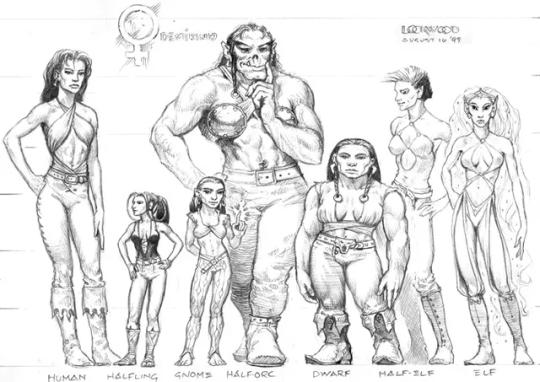
375 notes
·
View notes
Text
Yeah I’m over the death of that one DnD character from 3 years ago (every character I’ve made since has just been a cheap imitation of you)
#dnd#dnd character#dnd campaign#dnd memes#dungeons and dragons#dungeons and dragons character#dungeons and dragons memes#dnd meme#d&d#dnd5e#5e#dnd 3.5#dnd 3e#d&d 5e#d&d memes#Syrdar I miss you every day
316 notes
·
View notes
Text
3e: Sticks and Stones
ALright I’m up late and the thing I was working on didn’t work and I don’t want to fall behind on my schedule so let’s just belt out something about the ongoing grievance I have in how 3rd edition D&D treated spellcasters as a better class of people with their own higher standard of living because being able to rewrite reality at will is by no means a perk enough to justify not feeling bummed out.
Let me talk to you about sticks and stones powers.
First the origin of the term. The psionics system of 3rd edition was a beautiful beast and also a complete functional failure. Its presence was demanded implicitly by being a thing that existed in 2ed and people liked, while its exclusion from the core of content was demanded explicitly by being a thing that existed in 2ed and people hated. It was a sci-fi thing, unlike the flying airships and unsupported towers made of glass that the rest of the fantasy genre had going on inside it. The psionic system has two distinct forms; the version that launched in 3rd edition proper, and the followup version in 3.5.
3rd editions’ psionic system had a lot of things in it to try and make sense of things that seemed like they should exist in a story, which included an idea of psychic combat. That was where two psychic characters could give up their actions to tangle with one another in a sequence of paper-rock-scissors-laser-godzilla in an attempt to determine who had the bigger brain, who had dedicated the right resources to it, and crucially, who hadn’t decided to spend a few turns using their actual powers to do actual damage or inflict control. Seriously, psychic combat was a hilarious system because it was only useful for psychics who both wanted to fight one another and deplete each other’s power points. Just using powers on one another, like by say, using psychic powers to bombard the other person with lasers? A lot more effective. But don’t worry, there was also the silliness of psychic combat folding in the Illithid power Mind Blast which is a cone stun that lasts for 1d4+1 rounds, aka ‘probably enough to kill anyone or get away from anyone.’
Yeah, player characters could have Mind Blast, at a certain level. It was the only thing anyone ever bothered with in that system.
Along with that system was a collection of psionic powers that all relied on different stats to make sure the spellcaster had to feel rounded. They then could use these well rounded stats to cast psionic powers which were quite mediocre compared to magical spells of their level, and also because of those rounded stats, likely to fail. The entire system was built on ‘hey, here are nice ideas, why don’t we do this’ and the answer coming out pretty evidently in the first playtest.
Anyway, in the Expanded Psionics Handbook in 3.5, Expanded from the Latin meaning ‘not a pig’s arse’, the rulebook decided to instead make the psychic spellcasters into what they always were: spellcasters. Spellcasters needed things like a familiar stat structure, feat support, prestige classes that advanced spellcasting, powers that scaled, and of course, eventually, as with so many things in 3rd edition D&D, gear support.
The Expanded Psionics Handbook introduced the power stone and the dorje. A power stone is an item that has a single use application of a power in it, imbued by the caster at some point. If you can manifest the power in the stone, you can use the power stone. A dorje is a power stone, but a little waggly stick. The waggly stick could have lots of charges stored in it. That is to say, power stones and dorjes are fundamentally, scrolls and wands, as every other spellcaster in the core rules had at the start of the edition.
All psionic manifesters had a limited pool of spells – sorry, powers – they could cast – sorry, manifest. Anyway, these spellcasters were like sorcerers, who could only cast a few spells and that meant that these items that expanded your available spells were super useful. This also meant there were spells you didn’t necessarly want to know wth your limited choices, but you could spend some of your gold to expand on that. Spells cast out of dorjes and power crystals were cast as weak as they could be – minimum caster level, minimum stat, so for a 1st level power, it would be the duration, range, and effect of a level 1 caster’s version, and the difficulty class to use it would be a dc 10. Not great stuff for offensive powers, you want to be able to put oomph behind those yourself.
But say, Comprehend Languages? Or Knock? or Object Reading? Spells that just give you information and aren’t cast under time pressure for combat? Nobody cares about the difficulty of those. You might as well have those in these convenient forms and never bother learning them for yourself. In the process this creates the vision of a marketplace supplied by the small number of psions who do actually know those powers and learned them entirely to supply everyone else with them through dorjes and power stones, which is, at the least, a little funny.
This led to the term ‘sticks and stones’ powers; powers you didn’t need or care about in most situations but you’d stick some of them in your backpack for convenience when you needed them later. This meant that over time, psionic characters would have a swiss army knife of toys for every out-of-combat situation and it was for a time, criticised.
It was criticised, because it was encroaching on the wizard.
Yes, that’s right we’re back there! We’re back at it! Becuase the problem as described was the problem of one character having too much versatility, and in 3rd edition design, the character who had too much versatility was the wizard’s niche. Wizards had been crafting spells into spellbooks and onto scrolls at the end of every day since day one of 3rd edition. They even got the feat to do it for free! Their spellbook was the biggest, and had the most weird niche things! The game even had rules for wizards that pointed out how sensible it was for a wizard to develop their own unique versions of existing spells!
The whole point of stick-and-stones powers is that the powers systems had things that existed in two non-overlapping fields of play, and then expected you to spend the same limited pool resources between them equally even though one of them could get you shanked by a drunken gnoll.
Check it out on PRESS.exe to see it with images and links!
30 notes
·
View notes
Text



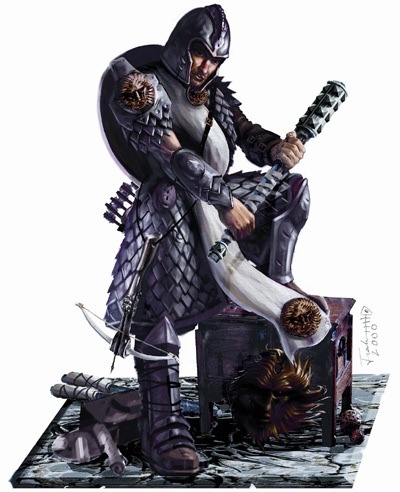
This is one of the player characters from the 2003 Dungeons and Dragons board game. The sculpt is based on Jozan the Iconic cleric from 3e and 3.5, I’ll include some art at the end, couldn’t find the artist though and I can’t read the signature.
Decided not to stick to the art. Not sure what god he’s supposed to worship as I’m not big on a lot of dnd lore. I think his shield is supposed to be the sun but I decided to paint it like it was The Green Man.
This was my first attempt at static grass, it’s pretty patchy now so I don’t think I’ve got the hang of it.
#dnd#rpg#d&d#dungeons and dragons#tabletop roleplaying#miniature painting#miniatures#tabletop gaming#cleric#Jozan#painting miniatures#dnd miniatures#dnd 3.5#dnd 3e#dnd iconic#cleric iconic
17 notes
·
View notes
Text
I already hate Herban.
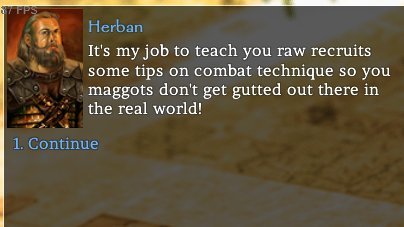
#neverwinter nights#nwn#nwnee#neverwinter herban#neverwinter nights enhanced edition#dnd#d&d#d&d 3rd edition#dnd 3e#video games#crpg
21 notes
·
View notes
Text
-aggressively sips orange juice-
So! What happens when you take an Edgy That Guy and ascend him into Godhood?
You get Shevarash, the elven god of revenge, loss, and hating drow.
I've said it before and I'll say it again: This dude needed therapy, not godhood. Fenmarel, for some reason, decided that it would be a good idea to help the most Anti-Drow elf to ever exist to become a god and it is because of this mindset that Shevarash has very few allies. He is so fucking focused on his tireless and unending crusade on the drow that only like-minded individuals will put up with him, such as Psilofyr and Callarduran Smoothhands.
Because let's be real: this man lives and breathes hatred. That is all he is now. Whoever he was before he became this person, this hunter obsessed with eliminating the drow is gone, destroyed during what is called the Dark Court Slaughter.
For those who are not familiar with this event in FR history or don't know what it is, the Dark Court Slaughter was an event that took place on Midwinter's Night in -4400 DR. It was the longest, darkest night of the year and an army consisting of Drow and Duergar swarmed out of the Underdark; the army overran both the dwarven realm of Sarphil on the southern shore of the Moonsea and the Elven Court at the heart of the great forest of Arocar. Countless lives of elves and dwarves were claimed that night, including most of the assembled leaders of the Fair Folk and the Stout Folk who had come to court to reestablish their long-standing alliance.
Among the few survivors was Shevarash but among the dead was his family. With grief and anger in his heart, Shevarash swore an oath to Corellon to become the hand of the Seldarine against drow to seek vengeance for the loss of his family.

(Demihuman Deities, p. 157)
And that is how Shevarash, likely once as carefree as most elves, became an agent of revenge. It's an oath he kept too. I would say that he became the greatest enemy the drow had because he was, for the remainder of his mortal life, relentless in his pursuit of the drow. He raided their underground cities, destroyed their shrines dedicated to their gods, and slew their priests.
However, Shevarash stories ends like many stories of revenge: his death. Shevarash was slain by a horde of myrlochar (soul spiders) after killing High Priestess Darthiir'eigg Aleanrahel and six of her consorts circa -4070 DR — 330 years after the Dark Court Slaughter. So ended the mortal life of Shevarash the Black Archer
But then Fenmarel decided to help him achieve godhood. Now Shevarash is the Night Hunter and Arrow Bringer. Fun fact: Corellon is the one who determines whether or not someone can join the pantheon, soooo they absolutely okayed Fenmarel's decision to help Shevarash undergo apotheosis. They okayed the most Anti-Drow elf to ever exist...becoming a deity.
Despite the fact that Corellon has TWO dark elf children (three if we count Vandria) and one of them is supposedly the favorite child (Eilistraee) because here's the thing: Shevarash (in his mortal life) hunted all drow, not just Lolthite drow — though Lolthites were his primary target. It didn't matter if you were Lolthite, Vhaeraunite, Eilistraean, Kiaransaleen, whatever — if you were drow, then you were his enemy. However, that changed once he became a demigod.

(Grand History of the Realms (2007), p. 27)
Yes. Eilistraee and her worshippers at one time, pre-godhood, were among Shevarash's targets. Demihunam Deities even states that it was only until recently (full disclosure: DD is a 2e Advanced Dungeons & Dragons accessory for the Forgotten Realms so by recently I'm guessing it's referring to 1370-1371. Either that or the late 1360s) that she managed to work out an some kind of truce with this guy.

(Demihuman Deities, p. 11)
An uneasy truce. Uneasy truces are typically truces that will only last a certain albeit unknown amount of time and given this is the Seldarine and fucking Shevarash — it likely would not take much to break this truce.
Not surprising given that Shevarash is not only the most Anti-Drow Elf to ever elf, but he also did hunt Eilistraee's followers in the past likely during his mortal life) — which, as Grand History of the Realms points out, is something he no longer does as he no longer considers Eilistraee and Eilistraeans to be among his prey (likely due to the fact that once he ascended he became aware that Eilistraee is nothing like her mother and brother). So both sides are likely tense from this history and while she may not be counted among his 'prey' anymore, that does not mean he likes her or even that she likes him.
They, at best, tolerate each other from what I can tell.
(not even gonna lie. I would not at all be surprised to learn if Shevarashans are still terrorizing Eilistraeans in some capacity despite this uneasy truce)
Is this truce still a thing in the current edition? I don't know because I don't where Shevarash and Eilistraee officially stand in the new edition in relation to each other. I can't tell you whether or not that truce is still on-going. It'll have to be up to individual interpretation.
My personal belief / interpretation is that this uneasy truce is likely fractured, perhaps severely so. With the return of the Dark Dancer and her brother, Eilistraee and Vhaeraun have achieved a new understanding of each other — as a result, they have a friendship and a truce (though their followers still get into conflict from time to time. Understandable, a long history of both sides hating each other and fighting each other isn't going to go away in a single night). Which is a problem for Shevarash because even though Lolth and her followers are still Shevarash's number one target, the rest of the Dark Seldarine (sans Eilistraee) is still very much his enemy. Vhaeraun is still his enemy. Shevarash's followers still hunt down Vhaeraunites. Shevarash, as mentioned in the screenshot I shared from p. 27 of the Grand History of the Realms, is now more able to hunt Lolth and Vhaeraun directly thanks to his becoming a demigod.
I can't see Shevarash at all accepting Eilistraee's newfound friendship with her brother due to his history with the drow and his mission. Eilistraee, for her part with this new friendship and truce, I think would protest against Shevarash still hunting her divine twin and his followers. Given what I know of Shevarash, I do not think he would see this as anything other than an incentive to return to crusading against Eilistraee as well. He is a very angry deity, consumed by hatred — he's not going to look at the nuance at the situation. Likely, he'll read this as Eilistraee as turning traitor, becoming corrupted, etc. etc. Because to him...drow are bad. It doesn't matter who they worship, in his eyes drow are bad. For Shevarash, there is no nuance. It's black and white, as clear to him as night and day.
He might tolerate the drow worship Eilistraee and he might tolerate Eilistraee herself...but that means nothing when he will eventually resume being hostile toward Eilistraee. And he will. It's not a matter of if, but when and it won't take much. Will he resume hunting her? Possibly, especially if she decides to break ties with the Seldarine.
I did have a section written up about the elven group who are disguising themselves as drow and raiding surface settlements (thank you lawful-evil-novelist for that bit of lore!). but upon further reading, I learned Champions of Ruins doesn't, unfortunately, definitively state that the group is Shevarashans. Only that they're a very anti-human group called the Eldreth Veluuthra, who are conducting these raids in hopes of increasing hostilities between humans and drow. The book further states that even though they worship the Seldarine, the good-aligned deities of the pantheon want nothing to do with them so as a result no cleric of the good-aligned elven gods are part of the group.
So it's up in the air if these particular EV raiders are Shevarashans (his alignment is listed as chaotic neutral; it's possible he didn't write them off completely unlike his good-aligned peers) or not.
#dungeons and dragons#forgotten realms#dnd 2e#dnd 3e#dnd 3.5e#the seldarine#shevarash#eilistraee#I don't care if it's a mess. I MADE A PROMISE TO MYSELF#THAT I'D GET THIS OUT BEFORE SEPTEMBER ENDS
18 notes
·
View notes
Text
Jander’s Expanded Guide to Vampires: the Dwarven Vampire

Hunter’s Rating: 🦇 🦇 🦇 🦇 🦇
Dwarven Vampires are a rarity even in the dread domains, although I’m inclined to attribute that to their habit of staying far, far underground, and eschewing the company of even their fellow undead. Few hunters will ever hear of a true Dwarven Vampire, much less encounter one directly. Their high rating here is given less as a measure of their capacity for bloodshed and evil (though both are still quite high), and more to illustrate how damned difficult they are to dispatch.
As with most Vampires, undead dwarves retain their skills and aptitudes from their living days, and quite naturally prefer to be found well below the surface of the earth. They lack any real vulnerability to sunlight, but find it distasteful nonetheless; and being above ground causes discomfort and reduced regenerative abilities, so it’s often a moot point. They also have also exchanged the charm ability common to other Vampires for a fearsome gaze, similar to the one sported by true Elven Vampires, and lack any real skill at shapeshifting. A Vampiric dwarf can summon and command a number of burrowing animals, but moles and badgers lack a certain finesse, in my opinion.
No, what makes the Dwarven Vampire so dangerous is a level of durability much greater than other variants of comparable age. Only weapons bearing significant enchantments or blessings can hope to harm them, and magic seems to abhor them altogether; spells often ricochet off the creature, and magical items will outright refuse to function in their hands. Stone and earth are the Dwarven Vampire’s preferred roads, as they possess an innate stonewalk ability, and fighting one underground is just asking to be grappled and drawn into a solid stone wall. As if this wasn’t bad enough, upon a would-be fatal blow the dwarf assumes the same state and vanishes into the nearest earthen surface, much as a common Vampire would dissolve into mist to escape. The creature is destroyed if prevented from reaching its coffin within minutes, but because of this a Dwarven Vampire is rarely far from such a sanctuary. How is a hunter meant to fight an enemy that laughs at most weapon blows, and can simply melt away into the environment whenever he likes?
By getting very, very lucky. Powdered metal can create a barrier the Dwarven Vampire cannot cross, and natural spring water acts as holy water does on other varieties. Dwellings constructed entirely without the use of stone or earth are impregnable fortresses against Vampiric dwarves, but those with stone floors or walls pose no hinderance whatsoever. And the one surefire means of incapacitating the creature is by impalement with a natural stalactite or stalagmite. Once paralyzed, the dwarf’s heart can then be removed, soaked in oil for three days, and burned completely to ash. Anything less than this runs the risk of the Vampire reviving at a later date, and you’d best hope that happens long after your children’s time.
The one saving grace of the Dwarven Vampire is that they seldom make themselves a problem requiring a hunter’s solution. The creatures tend to sequester themselves far underground, and don’t make a habit of amassing power and social influence the way many Vampires of other races do. Apart from the necessity of feeding, which they do by draining the living vitality of their victims, they tend to live almost entirely solitary existences -- much as I myself once did. Through some quirk of unnatural nature, the dwarven strain of Vampirism requires a more active participation on the part of the sire and is incapable of crossing species lines to infect other humanoids. Thus, a Vampire of this type will only create spawn intentionally, only from other dwarves, and only for a specific purpose. Oftentimes such spawn are destroyed by their maker after a bare few months or years, out of a lingering sense of sorrow and compassion for what has been done to them.
If you absolutely must fight a Dwarven Vampire, do so with the utmost caution and preparation. Expect heavy casualties. And whatever you do, do not target the one that lives in Castle Avernus. Azalin has very, ah, definite opinions about people who attack his staff...
#ravenloft#vampires#jander's expanded guide to vampires#dnd#dnd 3e#dwarven vampire#seriously that stonewalk ability is OP as hell lmao#at least elven vamps' treewalk has limitations
14 notes
·
View notes
Text

Another day, another drawing of a character I haven’t played since 3e 😂
On scrap printer paper no less
#alreesha#tiefling#dnd#dnd ocs#dnd 3e#copic#copic markers#coloured pencils#what fresh new hell is she looking at with this expression 😂🤣
23 notes
·
View notes
Text
Introduction to the Forgotten Realms Atlas
Greetings!
Around the beginning of March, 2022, I was picking my way through the files of the Trove when I stumbled across a treasure most impressive. Buried amidst an archive of Dragon magazines and a program to teach you the rules of AD&D 2e, was this:

So, like any self-respecting adventurer who had just come across a treasure chest, I did not check for mimics, and immediately opened it up (after speaking with a few of the Installation Wizards).

Behold, what I found inside that chest!
Now, I want to preface my findings with a few important details about myself. For years now, I have had a special fascination with the Forgotten Realms, call it inexplicable, call it what you will, but something has endlessly pulled me into this world. First, my interests were focused primarily on Drow: their culture, society, and lore. But soon, my exploration through the pages of the Forgotten Realms Wiki (for purposes personal and game related) broadened my horizons, you could say.
And curiosity begets curiosity begets a lust for knowledge.
As it turns out, the planet that the well-known Faerûn is situated on, Toril, has remarkably few canon maps that show it in full, at least not easily accessible from a cursory image search. There are a number of maps of more well-known areas, primarily within Faerûn, as it is the most well-established continent in the canon. Some are beautifully rendered in high resolution, such as the 5th edition map of the Sword Coast, released in 2015 by Wizards of the Coast (art by the WotC Extra Life Team, for download here)

This map is beautiful. I have a 54x36″ print of it hanging on the wall of my room. The detail is stunning, even if nearly half of it is covered in water. The issue is, this map only includes a fraction of Faerûn, and nothing of other continents of this world. This is the best map that 5e offers players in the Forgotten Realms in terms of sheer magnitude of places to be explored. But here we are, seven years out from it’s creation and release, without a world map.
So, I went to other editions, because the plethora of lore that is held in those books is astounding, and makes me wish that I had entered into this field of study far earlier in my life, or perhaps, that I was born just a little earlier, so I could have appreciated them at the time they were released.
The 4th edition map of Faerûn has a few key things that need to be noted before you look at it too deeply. As many know, 4e was the edition that introduced the Spellplague to the Forgotten Realms setting. I will make no moral judgements of this event in this entry, but I will point out the things that it changed in the world, the majority of which were undone by the Second Sundering and the ushering in of 5e.

This map, as you can see, features a much larger area, including just about all the land that makes up the continent of Faerûn. However, I must point out what many scholars of the realms already know.
1) The art on this map is... well it’s poopy. I don’t want to be rude, but the dreary color palette does it no service, and the Underchasm is a large brown stain that draws your eyes to it. I’ll let you do with that what you will.
2)The problem with Chult.
Since I am traveling backwards in time to reach my destination, I feel here is where I must skip around a wee bit. You see, Chult is a location that has been featured through numerous iterations of the Forgotten Realms, appearing in books as far back as the very first Forgotten Realms Campaign setting (1987). It has jungles and dinosaurs, and its own set of critiques and criticisms that I will surely dive into another time.
The short of it is, Chult was originally a peninsula, meaning that it was a land mass that went out to sea, but was still attached via land to the mainland of the continent. With the events of the Spellplague, it was made into an island, and then returned to being a peninsula. For reference, we can use the next map on our journey, the 3rd edition map of Faerûn.

It may not have the details and aesthetic of the 5e map, but thankfully, it also does not have the unpleasant skid mark of the Underchasm that the 4e map so graciously provides us.
And, most importantly, it shows us how Chult was, and how it presumably returns to post-Second Sundering.

I’ll go into detail regarding this another day, but needless to say, the 4e map is... sub-par for our purposes.
And so, in our time machine, we make it to the year 1999, when the Forgotten Realms Interactive Atlas comes to Forgotten Realms Enthusiasts about to brave the new millennium.

A thrilling piece of software, this. After three major updates, it came to contain over 800 maps of the Forgotten Realms, including cities, streets, and even building interiors. All of them accessible in such a way that they could be exported and printed to be used at the table. But, the most impressive part by far, was the globe.

I dare not post a gif of it in motion as it sometimes even gives me a headache, but rendered in stunning 2D, was a globe that you could click and drag to move. But it was more than that! By using the zoom tool, clicking an area would bring you to a “child” map of the area you wished to see in detail. On more fleshed-out areas of Toril, this means you can go as far as to a single city street in Waterdeep, following the chain of parent-child maps.
Google Earth’s initial release was not until July of 2001, nearly two years later. This must have been a massive undertaking for the artists and programmers involved, and it fills me with joy.
But there’s more?!
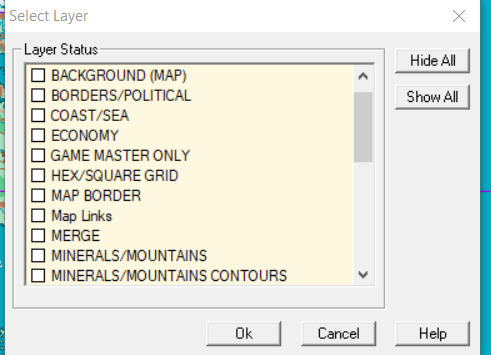
There are 28 different options that can be toggled for you to view, from contours to waterways, political boarders to structures to vegetation.
And, the glory of it all, I find a canon map of Toril.
I am jumping around once more, but technically, we were given a map of Toril in 3rd edition. However, it looked like this:

Meanwhile, the Forgotten Realms Interactive Atlas provides us with this:

(Pardon the quality, I screenshot-ed the original program from 1999, and it’s chunky at best)
But the art and resolution aside, this is stunning! This is everything at a scale and level of detail that tells us much more than the 3e outlines ever could. AND you can choose areas to zoom in on.
The only downside is, we do not see the same level of detail on many of the continents that we do for Faerûn. This is supposed to represent how, in Faerûn, they actually do not know much about these places, and have not mapped them out yet. Also, I am sure that not including those details made this project feasible in the first place, and I respect that. It was 1999, computers could not handle the things they do now, and certainly not at a price that an amateur hobbyist could purchase and use, considering the audience was mostly school-aged kids and teens to my understanding.
So, you might be asking, what does this all mean?
Well, not long after this discovery, I came across a book in a game store, carefully wrapped in plastic to preserve it.
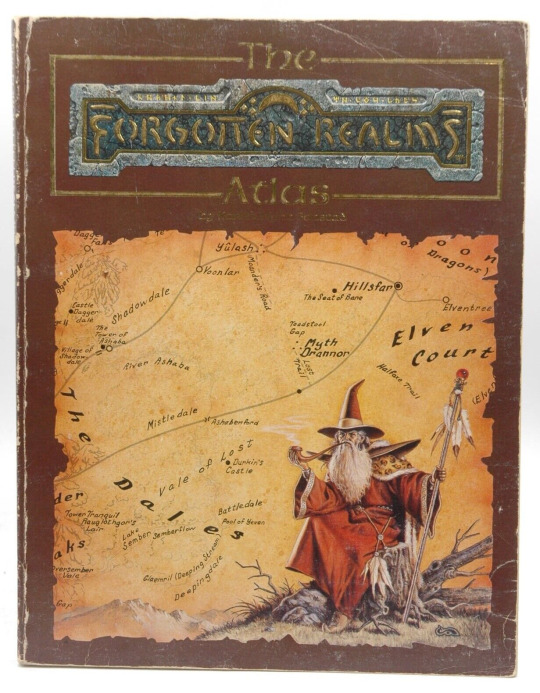
Published in 1990.
As of writing, I have yet to unpack the contents of this atlas, but I want to do it in a way that is meaningful, and can also provide a reference to others. This blog will be dedicated to my research and ramblings on everything that I find.
So, welcome adventurers! It’s time we set off on our journey!
#Forgotten Realms#dungeons and dragons#meta analysis#faerun#faerûn#maps#D&D#dnd#ttrpg#map making#forgotten realms atlas#ed greenwood#dnd 2e#dnd 3e#dnd 4e#dnd 5e#fantasy#introduction post
18 notes
·
View notes
Text

Katrina and Venger from a Jamspace a server I’m in did
4 notes
·
View notes
Text

The Best DnD Editions to Check Out
I wrote this article for a gaming review site where I compare and contrast all the editions of D&D going back to AD&D. I don't go into a ton of details on the ins and outs of older editions, but I do talk extensively about what's best for new players to get into. Hope you like it.
Check it out here please and let me know what you think
0 notes
Text
Yeah this isn't part of the tournament this is just for my sake. IMPROMPTU BATTLE FOR MOST SEXY ORC
5e Gray
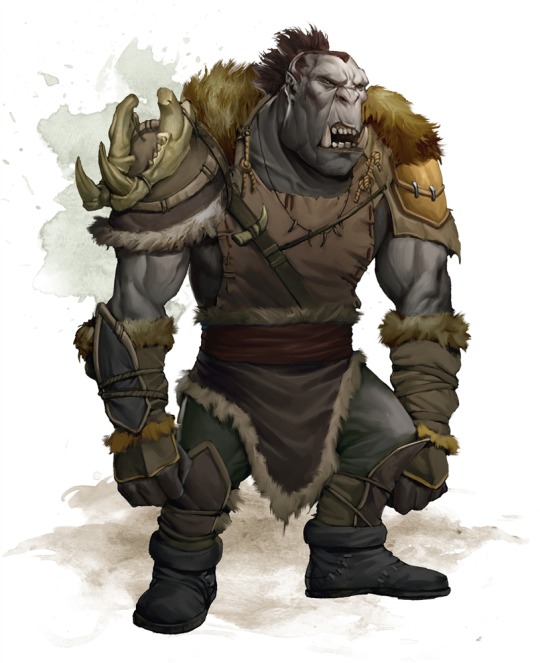
5e PC

5e Claw of Luthic

4e

3e

2e

1e
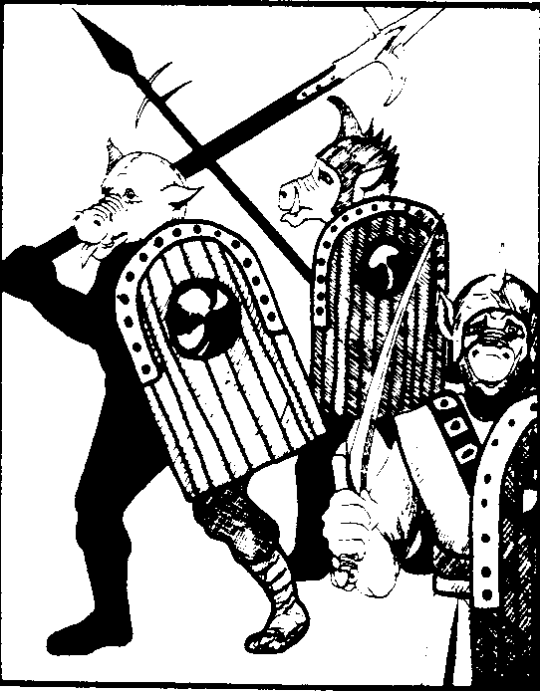
188 notes
·
View notes
Text
My characters don't die, they're all too awesome!
The one that sticks in my mind the most is the death of the paladin Aaron Fielding. He was a noble, practical, determined sort that most people could only address by his full name. He may have once arrested the government and/ or church. As a result, when a passing monk turned out to be an assassin there was no real surprise.
The part where he went clattering and clanging down the stairs like some had just dropped all the pots and pans at once, that was a surprise. Refused to be raised from the dead too, considering his mission complete and his death to be an impetus for others to continue the work.
Pour one out for him, but make it water. Stupid paladins.
0 notes
Text
3e: Monk Attacks
Have you ever encountered something where a system is evident but the language for discussing it isn’t?
Cast your mind back to the days of Dungeons & Dragons 3rd edition. No, not 3.5, the one that forms the basis for Pathfinder that people generally claim is ‘the good one’ before 4th edition (the best edition) came along. 3rd edition, the edition before 3.5, which is what it definitely was, was notable for being ‘the things people like about 3.5 D&D, but all quite a bit more shit.’
Know what was really bad in 3rd edition? Well, a lot of things, including Paladins, Rangers, Fighters, Barbarians, Bards, Half-Orcs, Half-Elves, Halflings and all but two melee weapons, but, in particular for this conversation, one class that was quite bad was the monk.
I won’t relitigate the whole story of how 3rd edition was a bad place to be a person whose primary job was punching things in the face. If you want to know more about that, I’ve written about it elsewhere, but just as an example, haste was a really stupidly powerful spell that made every melee character struggle to keep up. But if we cut off the top of the graph where all the spellcasters that are good (like the wizard, druid, and cleric) live, and focus just on the 3.0 Loser Brigade that do melee damage, even then in that space, the monk had some problems.
The way the monk worked is that the monk, limiting itself to melee attacks made with its fist or its collection of ‘exotic’ monk weapons, would get to attack more often, at lower accuracy. At level 1, instead of swinging a 2d6 greatsword, you could make two 1d6 attacks at -2, for… well, less likely to deal 2d6. But okay, you may think, the trade-off isn’t good at level 1, but what if the monk gets better, faster, than the fighter does?
Well, let’s assume that’s the case, and before we move on to talk about how badly that is implemented, that idea is a really bad one for the actual game. If a level 1 wizard, level 1 fighter, and level 1 monk all approach roughly equal threats knowing that some of them are just plain out worse at dealing with things, then you’ve got a balance problem. Being unfairly bad at level 1 doesn’t make being unfairly strong at level 16 okay, and vice versa. The notion that power ‘scales up’ in this non-linear way is one of the poisons 3e has had in it, because you run into a problem so obvious that it’s got a TVtropes page.
No I’m not going to link to it.
But here’s where things get really weird, when we talk about iterative attacks. Except I’m not sure the game rules call them ‘iterative’ – that’s game language that cropped up for sad dorks online. The way the rules worked is that you have a stat, universal for all characters, called a base attack bonus. When your base attack bonus passed a 5 threshold, you got another attack at -5, at the end, if you ever did a full attack. That means when your base attack bonus was 6, you could make two attacks, one at +6, one at +1.
Monks got a different version of this; they got to iterate their attacks when their Base Attack Bonus crossed the number 4. Since they got the medium Base Attack Bonus (which improves at a rate of three points every four levels), that meant that they got their second attack at level 6, just like a fighter, their third at level 10, one level before the fighter, their fourth at level 14, two levels before the fighter, and their fifth at level 18. Fighters never got a fifth attack (I know, I know, you in the back, you’re very clever, leave it for now). At level 18, the monk could be attacking for 6d20, whenever they make a full attack, with their flurry, and that sounds pretty cool!
And we’re going to set aside the gap between magical powers and weapon enchantments and things like bleeding weapons that monks can’t use and all that jazz, but the important thing here is this is all due to the way that the monk adds its base attack bonus. The rules, once you know that iterative attacks work by adding base attack bonus, are evident. Monks get their extra attacks at +4, so, hey, maybe you could push the monk to get more attacks, faster, if you mix monk levels with fighter levels? What does that do?
It does nothing.
Don’t get me wrong, there were some vague attempts to work on it – there was in the 3e book Sword and Fist, where a monk prestige class said some things about adding and it counting, and monk levels count, but the whole thing was written in a very confusing way. And like, the rules didn’t have a good formal way to say: Monks gain extra attacks for every 4 points of base attack bonus. Or A monk’s unarmed attack iterates at +4.
It was a weird thing where the game rules clearly had this complex rules operation, but also the game had no in-language way to refer to it. Like, the game doesn’t refer to as ‘points of base attack bonus’ or even ‘when your base attack bonus exceeds.’ It’s just something the game only represented on tables. And that means that it was very easy to work out how the rules worked, but the game rules then had a very hard time explaining how the rules worked to players. The way it wound up wording things for Monk Prestige Class is that monk prestige class levels stacked with monk class levels for determining bonus attacks, but not actually base attack bonus. So you had to always make sure you were taking levels in 4s, which was awkward and untidy.
Monks were helped quite a bit in the next edition, 3.5, where they had a smoother damage curve and more abilities and they were just a little bit less hooped by damage resistance and the like in general. It was a much needed improvement necessary to keep Monks as about as shitty as Barbarians and Fighters, and well away from being actually strong.
Check it out on PRESS.exe to see it with images and links!
39 notes
·
View notes
Text
3E Ireena: Who are you?
5E Ireena: I'm you but weaker.
3E Ireena:
5E Ireena:
3E Ireena: Take me to the castle right now so I can kick his fucking undead ass right this instant.
#dungeons and dragons#dungeons & dragons#dnd#d&d#curse of strahd#ireena kolyana#tatyana federovna#strahd von zarovich#expedition to castle ravenloft#as;dflajs;ags;lh FULL DISCLOSURE LISTEN. I LOVE HER. I LOVE 5E IREENA TOO OK#BUT IM READING THE 3E STAT BLOCK AND THE DIFFERENCES IN HER WRITING IN THIS VERSION AND. GODDAMN#on one hand: there's a TON of room to tweak her for DMs#you can make her a sidekick! you can make her a badass fighter OR you can keep her noble stat block and focus on using her creatively#in other ways socially. you can make ireena really cool without being a frontline badass or have her grow into the role over time#BUT ALSO i feel like 3e ireena has a much more defined and badass personality written into her#and actually gives her a reason to be rocking that badass armor and wanting to take an active stance against freeing herself from strahd#and storming the castle#it's just so... gaaaah#starposts
38 notes
·
View notes
Text
Neverwinter Nights: How to Remove Alignment Restrictions From Classes / Prestige Classes
Go into your nwn directory and find the "source" folder.
Find, "classes.2DA"
Find the "Align restrict" column, and in the row for the appropriate class enter: 0x00
Find the "AlighRstrctType" column and in the row for the appropriate class enter: 0x1
Save the file into your nwn/override directory.
That *should* set whatever class you're messing with to the alignment restrictions of a fighter, which has none.
25 notes
·
View notes